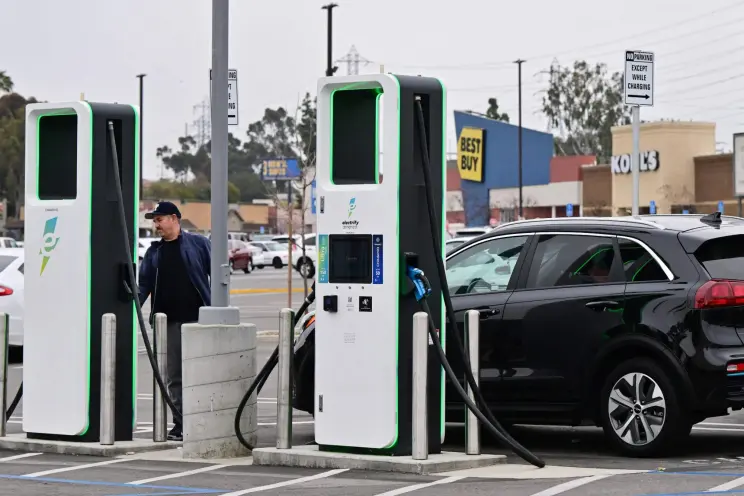The Environmental Protection Agency plans to ratchet up emissions standards starting with the 2027 model year to force automakers to sell ever-fewer gas-powered and even hybrid cars.
The point is to leave both sellers and buyers with no choice except all-electric vehicles, though it’s not clear that the industry can even produce 10 times the EVs it does now.
Carmakers actually lose money on every EV sale now, though (per the Kelley Blue Book), the average EV price is $58,940, vs. $48,008 for a gas-powered car.
The industry only makes EVs because 1) the feds basically require it, and 2) its leaders buy the idea that EVs are the future; companies feel doomed if they don’t get onboard now.
Nor do EVs actually much reduce carbon emissions, because the electricity that powers them is itself mainly the product of burning carbon fuels.
And will remain so for the foreseeable future, unless America suddenly starts building a lot more nuclear power plants.
Washington (and state capitols from Albany to Sacramento) can decree vast increases in solar- and wind-produced electricity, but actually making it happen is ruinously expensive — roughly half a trillion bucks just for New York’s current plan.
Meanwhile, Beijing dominates the supply chain for key components of electric vehicles. And changing that requires Washington not just to rule out consumer subsidies for China-dependent EVs, but also to enable, for example, massive lithium mining in this country — overriding other environmental concerns.
Not to mention the toxicity of used high-tech batteries (and the near-nonexistent technology for recycling them).
Anyway, even if the EPA rules withstand legal challenge, the feds can’t actually make anyone buy an EV; they can only limit new internal-combustion-engine-vehicle sales.46
Because EVs are limited in range (and charging them is time-consuming), the consumer market will likely respond by keeping old ICE-cars on the road far longer. Used-car prices will soar.
Either by having to buy electric despite the price and inconvenience, or forking over more for clunkers, working stiffs get the shaft again.
Source: New York Post










